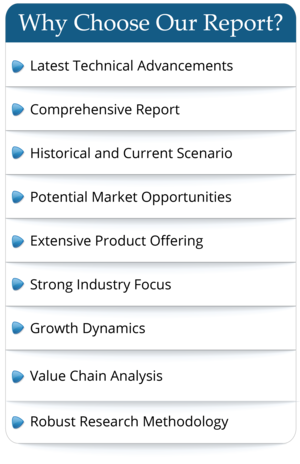Global Patent Licensing for Batteries & Materials Market Size, Share and Industry Analysis by Regions, Countries, Types, and Applications, Forecast to 2028
SKU ID : Maia-23842935 | Publishing Date : 25-May-2023 | No. of pages : 100
Patent licensing is a revocable agreement between a patent owner and a licensee to transfer interest in a patent to a licensee, who can benefit from and enforce the intellectual property rights. The Patent Licensing for Batteries & Materials covers battery manufacturing technology, battery material formulation, and battery material manufacturing and so on.
Patent Licensing for Batteries & Materials deals involve payment for the license. The licensor will either receive a single-time payment or as continuing payments known as royalty, depending upon what is agreed between the licensor and the licensee. And usually, license agreement comes with some terms and conditions agreed by both parties, which have a binding effect on them. The agreement consists definition of the product, mode of payment between parties, the purpose of the license, and many more.
Market Challenges
The battery technology upgrade cycle is short. With the iteration of positive and negative materials, structural innovation, and new technologies such as solid-state and semi-solid electrolytes continue to emerge. Lithium battery and battery companies are actively deploying solid-state battery technology, but the industry is still in the stage of semi-solid-state to all-solid-state development. The technical problems of all-solid-state batteries still need to be solved, and it will take a long time to truly realize industrialization and scale. In addition, due to its excellent performance and huge potential, it attracts battery players with strong strength and capital to continuously invest in research and development. The leading players have accumulated technology for more than ten years. Once a breakthrough is achieved, high technical barriers will be formed. At the same time, it will also affect the authorization and use of patents of other technical routes in the battery industry, and bring challenges to the authorization of other patents in the battery industry.
Restrictions on Licensees
Patent Licensing for Batteries & Materials technology licensing may add a layer of expense to battery products. Adding new technology is a good thing, but only if its cost is what the market can charge for it. Adding multiple technologies to products may make technology-rich battery products too expensive to market.
Battery manufacturers that rely on licensing technology may become overly dependent on technology, which ultimately becomes a barrier to the company's ability to expand in the future or to change, modify and improve its products to suit different market needs.
Therefore, for the Patent Licensing for Batteries & Materials industry, the licensee should pay attention to the investment in R&D, innovation, etc. while using the relevant patents.
Region Overview:
In global comparison, a significant portion of the revenue was generated in Asia-Pacific (65.28% in 2021).
Company Overview:
Samsung is one of the major players operating in the Patent Licensing for Batteries & Materials market, holding a share of 13.29% in 2022.
Samsung
The Samsung group diversified into areas including food processing, textiles, insurance, securities, and retail.
Panasonic Corp.
Panasonic Corporation is a Japan-based company engaged in the integrated electronics related business. The Company has four business segments. The Appliance segment is engaged in the development, manufacture and sale of products for home appliance, beauty, health and other business to consumer (BtoC) business, as well as devices, energy and other business to business (BtoB) business. The Eco Solutions segment is engaged in the development, manufacture and sale of electrical equipment, housing materials and other products for construction business. The Connected Solutions segment is engaged in the development, manufacture and sale of products for distribution, logistics, entertainment, public, avionics and manufacturing business. The Automotive and Industrial Systems segment is engaged in the development, manufacture and sale of products for automotive motorized systems business, as well as batteries and other BtoB business. The Company is also engaged in the sale of raw materials.
Segmentation Overview:
By type, Non-Exclusive License segment accounted for the largest share of market in 2022.
Exclusive License
An Exclusive Licence means that no person or company other than the named licensee can exploit the relevant intellectual property rights. Upon grant of the exclusive license, even the licensor is also excluded from exploiting the intellectual property rights and cannot sell the goods in the territory where the licensee has acquired an exclusive license. In this type of licensing, the risk of infringement is less as it is less exploited and the licensee will have a monopoly over the market, so the cost of the product will be higher than the usual price, and the revenue will also be higher, and licensor will also receive a higher royalty payment.
Non-Exclusive License
A Non-Exclusive Licence grants to the licensee the right to use the intellectual property, but means that the licensor remains free to exploit the same intellectual property and to allow any number of other licensees to also exploit the same intellectual property.
Application Overview:
In the Patent Licensing for Batteries & Materials market, 69.74% of the total value was generated through the Batteries segment by application in 2022.
Batteries
Licensing of patents related mainly to the entire battery production. such as solid-state batteries.
Materials
Mainly refers to the patent licensing of battery materials. Such as positive and negative electrode materials.
The Patent Licensing for Batteries & Materials market report covers sufficient and comprehensive data on market introduction, segmentations, status and trends, opportunities and challenges, industry chain, competitive analysis, company profiles, and trade statistics, etc. It provides in-depth and all-scale analysis of each segment of types, applications, players, 5 major regions and sub-division of major countries, and sometimes end user, channel, technology, as well as other information individually tailored before order confirmation.
Meticulous research and analysis were conducted during the preparation process of the report. The qualitative and quantitative data were gained and verified through primary and secondary sources, which include but not limited to Magazines, Press Releases, Paid Databases, Maia Data Center, National Customs, Annual Reports, Public Databases, Expert interviews, etc. Besides, primary sources include extensive interviews of key opinion leaders and industry experts such as experienced front-line staff, directors, CEOs, and marketing executives, downstream distributors, as well as end-clients.
In this report, the historical period starts from 2018 to 2022, and the forecast period ranges from 2023 to 2028. The facts and data are demonstrated by tables, graphs, pie charts, and other pictorial representations, which enhances the effective visual representation and decision-making capabilities for business strategy.
Key Companies in the global Patent Licensing for Batteries & Materials market covered in Chapter 4:
Huawei
Toyota
Nokia
Sony Corporation
Toshiba
CATL
Samsung
Hitachi
Bosch
Panasonic Corp.
LG
In Chapter 12 and Chapter 14.1, on the basis of types, the Patent Licensing for Batteries & Materials market from 2018 to 2028 is primarily split into:
Exclusive License
Non-Exclusive License
In Chapter 13 and Chapter 14.2, on the basis of the Downstream Industry, the Patent Licensing for Batteries & Materials market from 2018 to 2028 covers:
Batteries
Materials
Geographically, the detailed analysis of consumption, revenue, market share and growth rate, history and forecast (2018-2028) of the following regions are covered in Chapters 6, 7, 8, 9, 10, 11, 15:
North America (United States, Canada, Mexico)
Europe (Germany, United Kingdom, France, Italy, Spain)
Asia Pacific (China, Japan, South Korea, India, Southeast Asia)
South America (Brazil, Argentina)
Middle East & Africa (Saudi Arabia, UAE, South Africa)
Outline:
Chapter 1 begins with the Patent Licensing for Batteries & Materials market scope and definition, product segment introduction, global overall market size, as well as market dynamics scenarios such as opportunities, challenges, and industry development trends under inflation. It offers a high-level view of the current state of the Patent Licensing for Batteries & Materials market and its likely evolution in the short to mid-term and long term.
Chapter 2 provides Patent Licensing for Batteries & Materials industry chain analysis, covering raw materials analysis, cost structure, price estimate, and forecast, along with price-impacting factors, downstream channels, and major customers. It aims to help readers to grab insights into product upstream, midstream, and downstream fields.
Chapter 3 depicts Patent Licensing for Batteries & Materials industry competitive analysis regarding market concentration rate, saturation rate, feasibility analysis from new entrants, as well as substitute's status and trends. It indicates the developing space and prospects of the current industry.
Chapter 4 analyzes extensive company profiles, comprising company basic info, product or service profiles, and sales, price, value, gross, and gross margin 2018-2023. It incorporates the Patent Licensing for Batteries & Materials market ranking, benchmarks, and company business portfolio.
Chapter 5 presents trade statistics of import and export volume from 2018-2023, demonstrating domestic and international market comparisons in specific countries.
Chapters 6-10 highlight Patent Licensing for Batteries & Materials market status at the regional and country levels, including 5 major regions of North America, Europe, Asia Pacific, the Middle East and Africa, and Latin America. The region and country list in the sample is only for reference, and it can be adjusted as required.
Chapter 11 involves geographical market figures of sales, value, market share, and growth rate. Economic, social, environmental, technological, and political factors have been taken into consideration while assessing the growth of each specific region.
Chapters 12-13 evaluate the Patent Licensing for Batteries & Materials market based on different types and applications. It focuses on sales and value of 2018-2023 from both vertical and horizontal perspectives.
Chapters 14-15 elaborate on the Patent Licensing for Batteries & Materials market forecast data from 2023-2028, segmented by types and applications, regions, and major countries, helping readers to know future aspects and growth trends.
Chapter 16 ends with an elaboration of data sources and research methodology. All possible parameters that affect the markets covered in this research study have been accounted for, viewed in extensive detail, verified through primary research, and analyzed to get the final quantitative and qualitative data.
Years considered for this report:
Historical Years:
2018-2022Base Year:
2022Estimated Year:
2023Forecast Period:
2023-2028Frequently Asked Questions
- By product type
- By End User/Applications
- By Technology
- By Region

 Pre-order Enquiry
Pre-order Enquiry Request Free Sample
Request Free Sample


 Request Sample
Request Sample Request Discount
Request Discount










